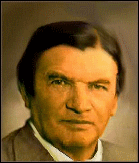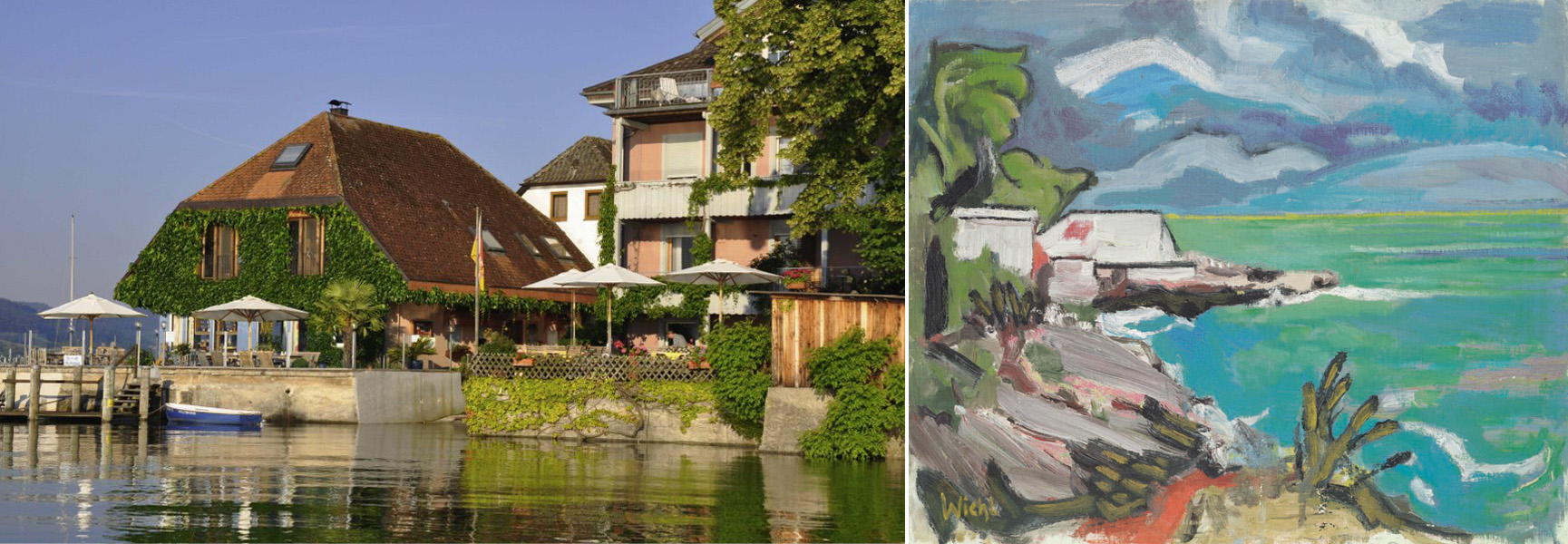Biography
Life
 Hermann Wiehl was born on 9 November 1900 in Nussbach near Triberg in the Black Forest as son of a clock dealer. He was first mentioned in 1925 in St. Georgen as a factory owner who could afford to paint. He made his money with small catering portions of honey which he sold to hotels and restaurants throughout Germany. Wiehl was a serviceman in the First World War and after demobilisation worked as a commercial traveller before setting up his own factory.
Hermann Wiehl was born on 9 November 1900 in Nussbach near Triberg in the Black Forest as son of a clock dealer. He was first mentioned in 1925 in St. Georgen as a factory owner who could afford to paint. He made his money with small catering portions of honey which he sold to hotels and restaurants throughout Germany. Wiehl was a serviceman in the First World War and after demobilisation worked as a commercial traveller before setting up his own factory.
Education and training
At the end of the twenties he enrolled at the Academy of Fine Art in Nuremberg where he first studied under Prof. Anselment and later in Dresden as student of Otto Dix with whom he enjoyed a lifelong friendship. A few Black Forest landscape paintings are known from his early artistic development in the thirties and forties. Wiehl’s style shows traces of expressive concentration and abstract stylising. In the fifties he painted still lifes.
Höri artists
Mitte der 1930er Jahre kam es zur Begegnung mit den Höri-Künstlern am Bodensee. Otto Dix hatte sich seit 1936 hier niedergelassen. Max Ackermann, der Theoretiker der abstrakten und absoluten Malerei, ein Schüler Adolf Hölzels, war seit 1936 hier zu Gast, nachdem er mit einem Lehr- und Ausstellungsverbot belegt worden war.
Outlawed by the Nazis
Wiehl, who was banned by the National Socialists from exhibiting and selling his paintings during World War II, had dealt intensively with the new colour language of Expressionism and the new iconography of Cubism. Equipped with solid skills in conventional figurative representation, he developed a stylistic diversity without, however, evolving an arbitrary pluralism of styles. In terms of quality, many of his works stand their ground next to the works of the first generation of expressionists.
Syle enhancement
Wiehl delved deeply into Ackermann’s idea of absolute painting. It involved the concept that art should have a minimum of forms and colours as their object, with Ackermann believing that basic shapes such as circles, triangles and squares and basic colours such as yellow, red and blue being sufficient and with the “musicality of the picture” being in the foreground. Wiehl juxtaposed this with his “architecture of the picture”. Other artistic impressions followed with Cubism and Constructivism. Encounters with Léger, Picasso, Chagall and Max Bill encouraged Wiehl in his search for his own expression and his own idea of painting.
In the fifties Hermann Wiehl travelled through Italy and Southern France. Paris, Ticino and Zurich were other places where he often stayed.
Philosophy
The themes he finds in his Black Forest home region have a very significant value for Wiehl. Thanks to the friendship with his teacher Otto Dix who lived on Höri, Wiehl also frequently painted at Lake Constance. The acquaintance with the abstract painter Max Ackermann takes Wiehl to a moderate abstraction.
Besides Black Forest and Lake Constance landscapes, Mediterranean themes, still lifes and self portraits also feature prominently in Wiehl’s works. His paintings are meanwhile found in museum and public galleries and exhibitions.
Wiehl’s spectrum of modern painting ranges from genre painters such as Hans Thoma and abstract artists such Max Ackermann, from Cézanne to Matisse and from the iconography of Expressionisms to Cubism.
Rediscovery
As a classic modern artist, Hermann Wiehl shares the fate of many other artists of falling into oblivion. Art dealer and gallery owner Roland Roeder rediscovered him in the early nineties. The gallery owners Roland and Tamara Roeder have collected, preserved and cared for Wiehl’s work. With reproductions, calendars and a major art book, they held Wiehl’s memory alive and ultimately ensured his breakthrough with several exhibitions.
Reviewers were unanimous in speaking of a major event in the art world, and Hermann Wiehl very soon moved up into the rank of a classic modern artist. Wiehl’s pictures enjoy more and more attention. The first major Wiehl exhibition in early 1995 at Lake Constance in the Hermann Hesse House on Höri saw a strong public response, with TV and the SWF broadcasting station also reporting in detail. A comprehensive illustrated book published by Roeder is already in its second edition. Wiehl’s painting are found on the covers of several classic music CDs by EMI.
 Left: Haus Stern in Hemmenhofen am See – original photo | Right: Haus Stern in Hemmenhofen - Hermann Wiehl
Left: Haus Stern in Hemmenhofen am See – original photo | Right: Haus Stern in Hemmenhofen - Hermann Wiehl


